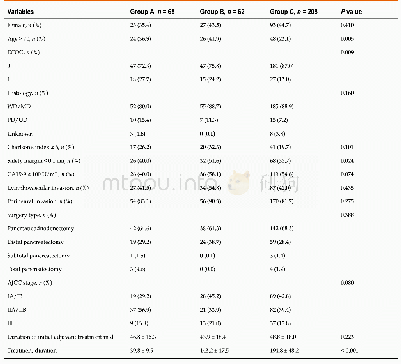《Table 1.Modern pharmacologic therapies for rheumatoid arthritis》
 提示:宽带有限、当前游客访问压缩模式
提示:宽带有限、当前游客访问压缩模式
本系列图表出处文件名:随高清版一同展现
《Rheumatoid arthritis: pathological mechanisms and modern pharmacologic therapies》
The identification of a preclinical stage and a growing understanding of the natural history and mechanisms of RA development,alongside new potential therapeutic interventions,shapes the prospect that RA might be prevented in future.76The current treatment principles for established RA involve symptomatic management and disease modification.A meta-analysis of 12published studies confirmed that patients receiving delayed DMARDs therapy were at higher risk of developing radiographic joint space narrowing and bony erosions.77In poorly controlled RA patients,bony erosions become evident on radiographs within 2 years of onset and these erosive changes are predictive of poorer functional outcome.78In a patient with otherwise unexplained new onset polyarthritis,an urgent referral to a rheumatologist is thus mandatory to confirm an RA diagnosis and early initiation of a DMARDs-based treatment plan aiming for disease remission with prevention of deformity.Oral corticosteroids are potent and effective anti-inflammatory drugs that may contribute to disease modification.79However,this needs to be weighed up against its well-known adverse effects.Symptomatic management remains important throughout the course of the disease and consists of everyday practical measures to deal with the primary symptoms of joint stiffness,such as pain and fatigue.Exercise is important to support joint flexibility and function,while abstaining from smoking is a universal advice to all RA patients given its impact on antibody formation. (Table 1.)
| 图表编号 | XD0021873900 严禁用于非法目的 |
|---|---|
| 绘制时间 | 2018.06.01 |
| 作者 | Qiang Guo、Yuxiang Wang、Dan Xu、Johannes Nossent、Nathan J.Pavlos、Jiake Xu |
| 绘制单位 | Department of Spine Surgery, Xiangya Hospital, Central South University、School of Biomedical Sciences, Faculty of Health and Medical Sciences, The University of Western Australia、Department of Spine Surgery, Xiangya Hospital, Central South University、Scho |
| 更多格式 | 高清、无水印(增值服务) |





